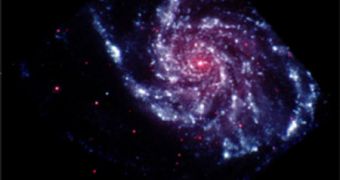The Ultraviolet/Optical Telescope (UVOT) instrument aboard NASA's Swift satellite has been recently used by British astronomers to hunt for a gamma-ray explosion just 251 seconds after it started manifesting itself. To pinpoint the onset of an emission in such a short time has only been made possible by the fact that the probe currently in orbit around Earth is one of the most efficient such crafts in history, and can both locate and focus on explosions in only a few minutes.
The quicker the astronomers track down an emission, the more information they can learn about its composition and its origins. Finding out which galaxy the burst originated from is very important, because it could potentially give them a better understanding of the conditions necessary in such a formation for an emission to happen. The details of this procedure, along with the newest results from UVOT appear in the February 27th issue of the journal Monthly Notices of the Royal Astronomical Society.
“The UVOT's wavelength range, coupled with the fact that Swift is a space observatory with a speedy response rate, unconstrained by time of day or weather, has allowed us to collect this early ultraviolet spectrum,” University College London (UCL) astronomer Martin Still, from the Mullard Space Science Laboratory (MSSL), shares.
“By looking at these earlier moments of gamma ray bursts, we will not only be able to better calculate things such as the luminosity and distance of a burst, but to find out more about the galaxies that play host to them and the impact these explosions have on their environments. Once this new technique is applied to much brighter bursts, we'll have a wealth of new data,” Dr Paul Kuin, also from MSSL, adds.
“The UVOT instrument is particularly suited to study bursts with an average to high redshift – a part of the ultraviolet spectrum that is difficult for even the very big ground-based telescopes to study. Using UVOT with Swift, we can now find redshifts for bursts that were difficult to capture in the past and find out more about their distant host galaxies, about ten billion light years away,” MSSL UVOT team scientist Massimiliano De Pasquale, who is an expert in gamma-ray bursts, concludes.

 14 DAY TRIAL //
14 DAY TRIAL //